Contents

Cutting Edge
2024.7.30
Are Bacteria ‘Bumps’ Changing the Future of Marine Nutrients?
“I have measured over 1,000 bacteria samples collected from the ocean with this microscope,” says Yosuke Yamada, a researcher at the WPI-AIMEC Marine Microbial Ecology Research Unit
He is researching the ocean biogeochemical cycle, but how does one investigate that with a microscope? Here’s an image he showed me in the lab.
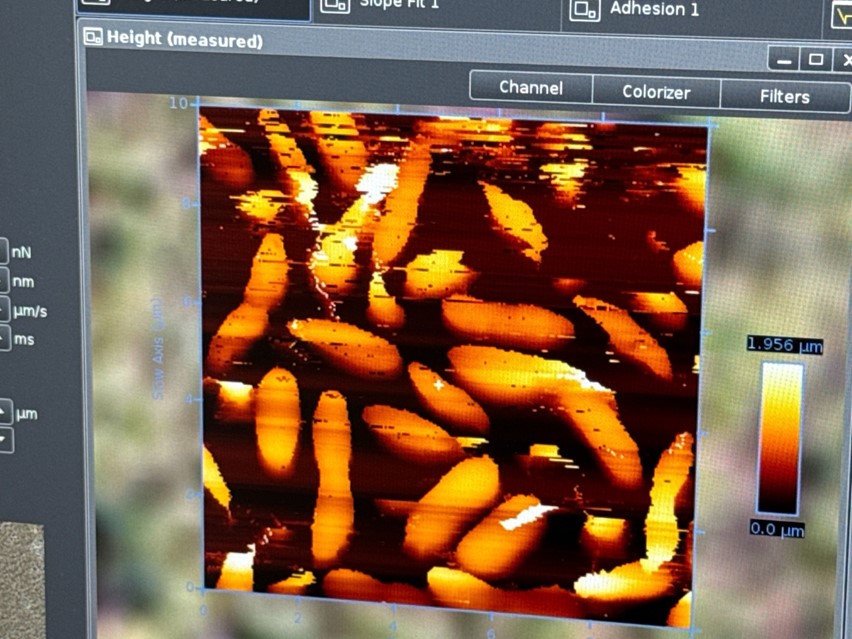
―Is this really bacteria? It’s so clear!
roscope). We can observe at the nanoscale and see bumps on the surface. We can observe bumps just a few nanometers on bacteria that are several hundred nanometers thick.
The AFM acquires three-dimensional information by pressing a tiny needle onto the sample and capturing its force and vertical movements with a laser.
―This needle can measure bacteria! That’s incredibly small. What does the surface of bacteria look like?
Until now, no one has examined the surface properties of marine bacteria in detail. When we examined bacteria collected from the seas of Hokkaido, Okinawa, and California, we found a variety, from smooth to very bumpy ones.
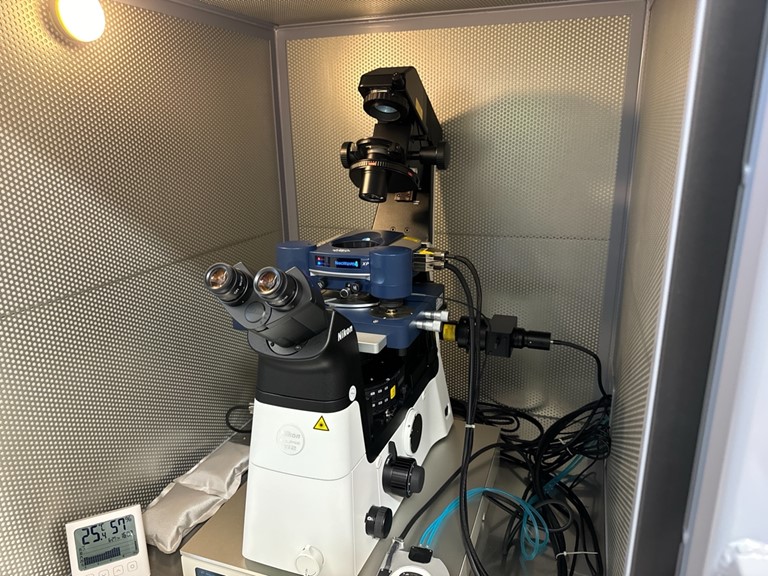
The box’s base is securely fixed to the floor to prevent vibrations.
―Why do you observe the bumps?
I’m investigating the relationship between the degree of surface irregularities of bacteria and the attachment of nanoparticles. The ocean contains a large number of nanoparticles, including nucleic acids, proteins, and polysaccharides. Bacteria decompose these nanoparticles attached to their surface with enzymes and utilize them as nutrients.
―What have you found so far?
I observed that bacteria from colder waters tend to be bumpier. Furthermore, artificial nanoparticles attached more easily to bumpier bacteria.
So, we can infer that nanoparticles are more likely to adhere to bacteria in colder waters.
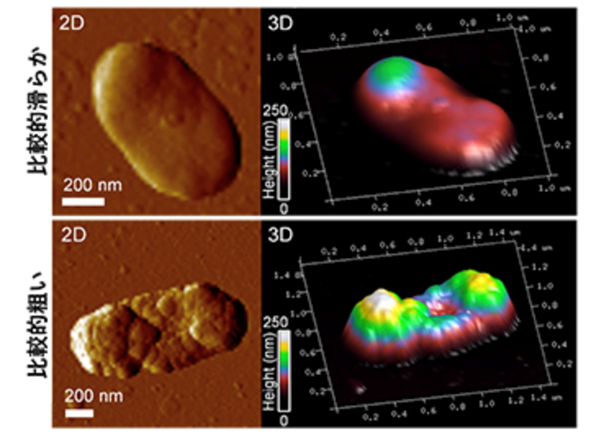
―Why do such differences exist?
I think it’s a bacterial strategy for survival. Nanoparticles randomly move and attach to bacteria in water. In colder water, which is more viscous, this opportunity decreases. Water is stickier for bacteria than we can imagine. Therefore, bacteria in colder waters might be bumpier to capture more nutrients efficiently.

(Kochi Institute for Core Sample Research of JAMSTEC / WPI-AIMEC Marine Microbial Ecology Research Unit)
―How is this connected to AIMEC’s mission to understand and predict how marine ecosystems respond to climate change?
The ocean’s carbon cycle starts with CO2 absorbed by phytoplankton through photosynthesis, which transforms it into organic matter. When phytoplankton die, they release large amount of carbon into the ocean in the form of nanoparticles.
It’s said that about HALF of the carbon in the ocean in the form of organic matter is used by bacteria. Although we can’t see it, there are approximately one million bacteria in a teaspoon of seawater.
―That many!?
I imagine this world as a microbial world, and humans are just living in it.
―If the nanoparticles decomposed by bacteria decrease, what happens?
While this is just one scenario, from the chemical properties of nanoparticles, if the carbon absorbed by phytoplankton forms nanoparticles and these nanoparticles increase without being decomposed, they aggregate and sink. This means carbon is stored in the deep ocean and seabed. As a result, more carbon dissolves into the ocean from the atmosphere, reducing atmospheric CO2 and potentially mitigating global warming.
―The story is grand…! How does global warming affect the flow of bacteria and organic matter?
There are various scenarios for predicting changes in biological and material cycles due to global warming, and no one knows the correct answer. Understanding how nanoparticles decompose and sink is essential. Although it’s basic research, we hope to contribute to improving the accuracy of predictions by elucidating significant phenomena.
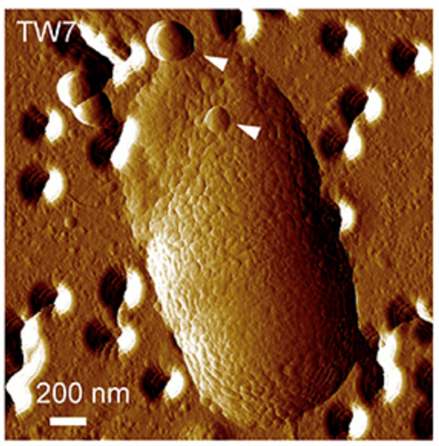
―Now it all makes sense! So, how much can we predict the use of nanoparticles from the roughness of the cell surface?
Based on the current results, we can say that the ease of nanoparticle attachment can be explained by the roughness of about 90%.
―Wow! Is the adhesion of nanoparticles mostly determined by whether the surface is bumpy or flat?
(Smiling wryly) Maybe it’s not solely determined by roughness. This time, we just happened to succeed, and we only examined two types of bacteria. To understand the actual situation in the ocean, we need to investigate other bacteria as well. In the future, we want to study other properties, such as hardness and adhesiveness, beyond the surface roughness of bacteria.
―I see, the idea that simple physical properties like bumps can change the flow of nanoparticles is refreshing. The circulation of organisms and materials seems very complex.
I aspire to have the sense of physicists who explain various natural phenomena with a single equation. Although I have a background in biology, after conducting particle sinking experiments and virus adhesion experiments with AFM in the U.S., I now wish to incorporate that sense.
―Your research shows that nanoscale physics might connect to predicting the global impact of climate change. It significantly broadens our perspective! Thank you very much.
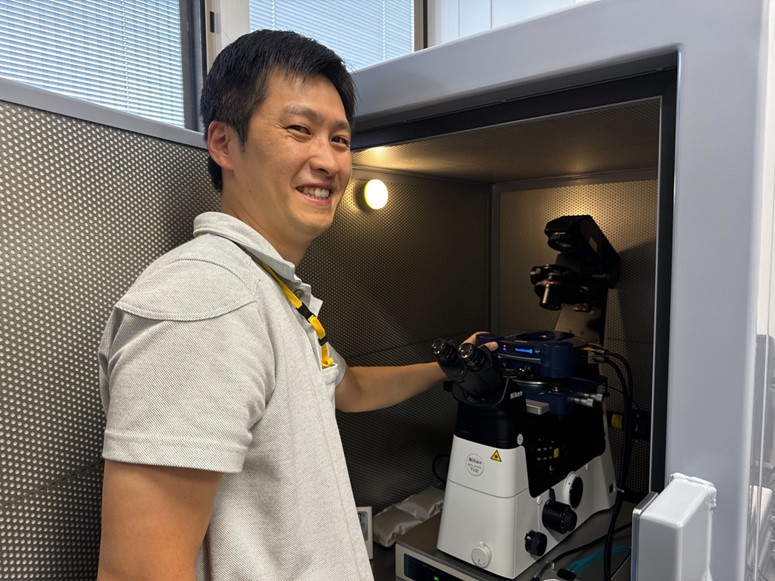
Interview
Tsunaki Iida (Specially Appointed Associate Professor and Science Communicator at WPI-AIMEC)
Links
Paper (published on January 27, 2024, in the scientific journal “Limnology and Oceanography”)
https://aslopubs.onlinelibrary.wiley.com/doi/10.1002/lno.12309


